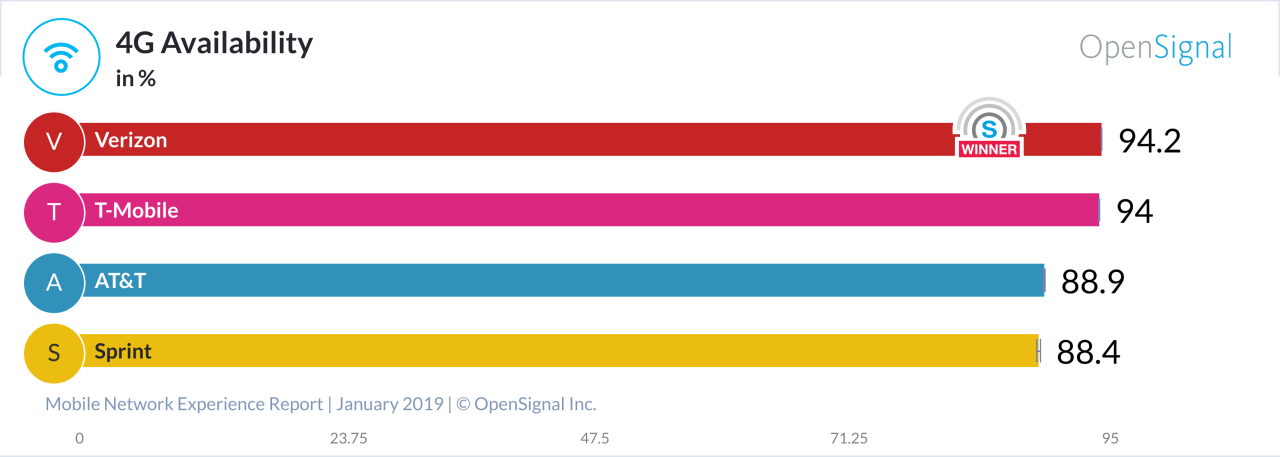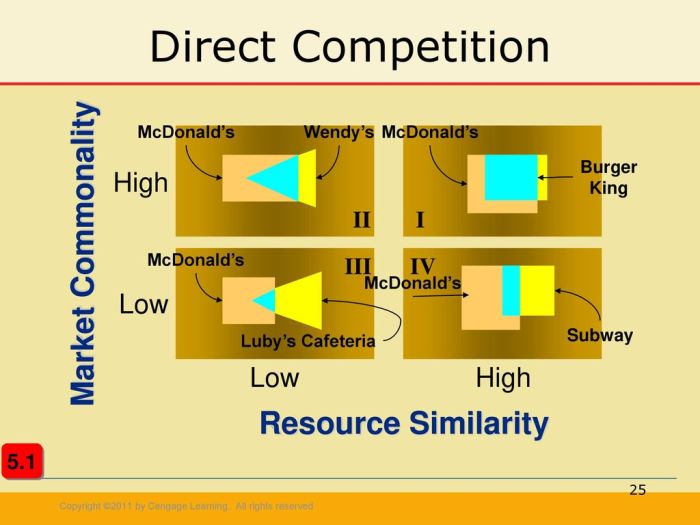Verizon and t-mobile have market commonality and resource similarity. – Verizon and T-Mobile, two telecommunications giants, share significant market commonality and resource similarity, shaping their competitive strategies and industry positioning. This analysis delves into the overlaps and synergies between these companies, exploring their impact on market dynamics and potential implications for collaboration and competition.
Their shared target audience, demographic profiles, and geographic presence create market commonality, fostering intense rivalry. Furthermore, their comparable infrastructure, technology, and spectrum resources lead to resource similarity, influencing their competitive capabilities.
Market Commonality: Verizon And T-mobile Have Market Commonality And Resource Similarity.

Verizon and T-Mobile share significant market commonality, targeting similar customer demographics. Both companies cater to a wide range of consumers, including individuals, families, and businesses. They offer a comprehensive suite of wireless services, including voice, data, and messaging, appealing to a diverse customer base.
Target Audience Overlap
- Young professionals and tech-savvy individuals seeking fast and reliable internet connectivity
- Families requiring affordable and flexible plans with ample data and calling minutes
- Businesses of all sizes seeking customized solutions for communication and collaboration
This overlap in target audience creates a competitive landscape where Verizon and T-Mobile vie for market share.
Resource Similarity

Verizon and T-Mobile possess comparable resources that shape their competitive capabilities.
Infrastructure and Technology
- Extensive nationwide coverage and high-speed networks
- Investment in 5G technology for faster speeds and lower latency
- Advanced network management systems for efficient service delivery
Spectrum Holdings
- Access to a wide range of spectrum bands, including low-, mid-, and high-band frequencies
- Use of spectrum aggregation techniques to enhance network capacity and speed
- Investment in acquiring additional spectrum to meet growing demand
These shared resources enable Verizon and T-Mobile to provide comparable services and compete effectively in the market.
Competitive Positioning
Despite their market commonality and resource similarity, Verizon and T-Mobile differentiate themselves through unique selling propositions and competitive advantages.
Verizon
- Strong brand reputation and customer loyalty
- Wide coverage and network reliability
- Focus on premium services and customer experience
T-Mobile
- Aggressive pricing and value-oriented plans
- Innovative features, such as free data roaming and unlimited streaming
- Targeting younger and budget-conscious consumers
These unique positioning strategies allow Verizon and T-Mobile to appeal to different customer segments and maintain their market presence.
Strategic Implications

The market commonality and resource similarity between Verizon and T-Mobile have several strategic implications.
Opportunities for Collaboration
- Joint ventures or partnerships to share infrastructure or develop new technologies
- Cross-promotion of services to expand their respective customer bases
- Collaboration on industry initiatives, such as standards development or regulatory advocacy
Threats and Challenges
- Increased competition and pressure on pricing and margins
- Need to continuously invest in network upgrades and technology advancements
- Potential regulatory changes that could impact their operations or market share
Understanding these strategic implications is crucial for Verizon and T-Mobile to navigate the competitive landscape effectively.
Industry Landscape

Verizon and T-Mobile operate in a rapidly evolving industry characterized by technological advancements and regulatory changes.
Technological Advancements, Verizon and t-mobile have market commonality and resource similarity.
- 5G technology adoption and its impact on network performance
- Emergence of new technologies, such as edge computing and artificial intelligence
- Virtualization and cloud-based network solutions
Regulatory Changes
- Government regulations on spectrum allocation and network neutrality
- Data privacy and security concerns
- Competition from new entrants or disruptive technologies
Verizon and T-Mobile must adapt to these industry dynamics to maintain their competitive positions.
Common Queries
What are the key similarities between Verizon and T-Mobile’s target markets?
Both companies primarily target consumers seeking reliable wireless connectivity, including individuals, families, and small businesses.
How does resource similarity affect their ability to compete?
Shared resources, such as infrastructure and spectrum, enable both Verizon and T-Mobile to offer competitive services and pricing, leading to intense competition.
What are the potential strategic implications of their market commonality and resource similarity?
These factors may drive collaboration opportunities, such as network sharing or joint ventures, while also posing threats related to market saturation and price wars.